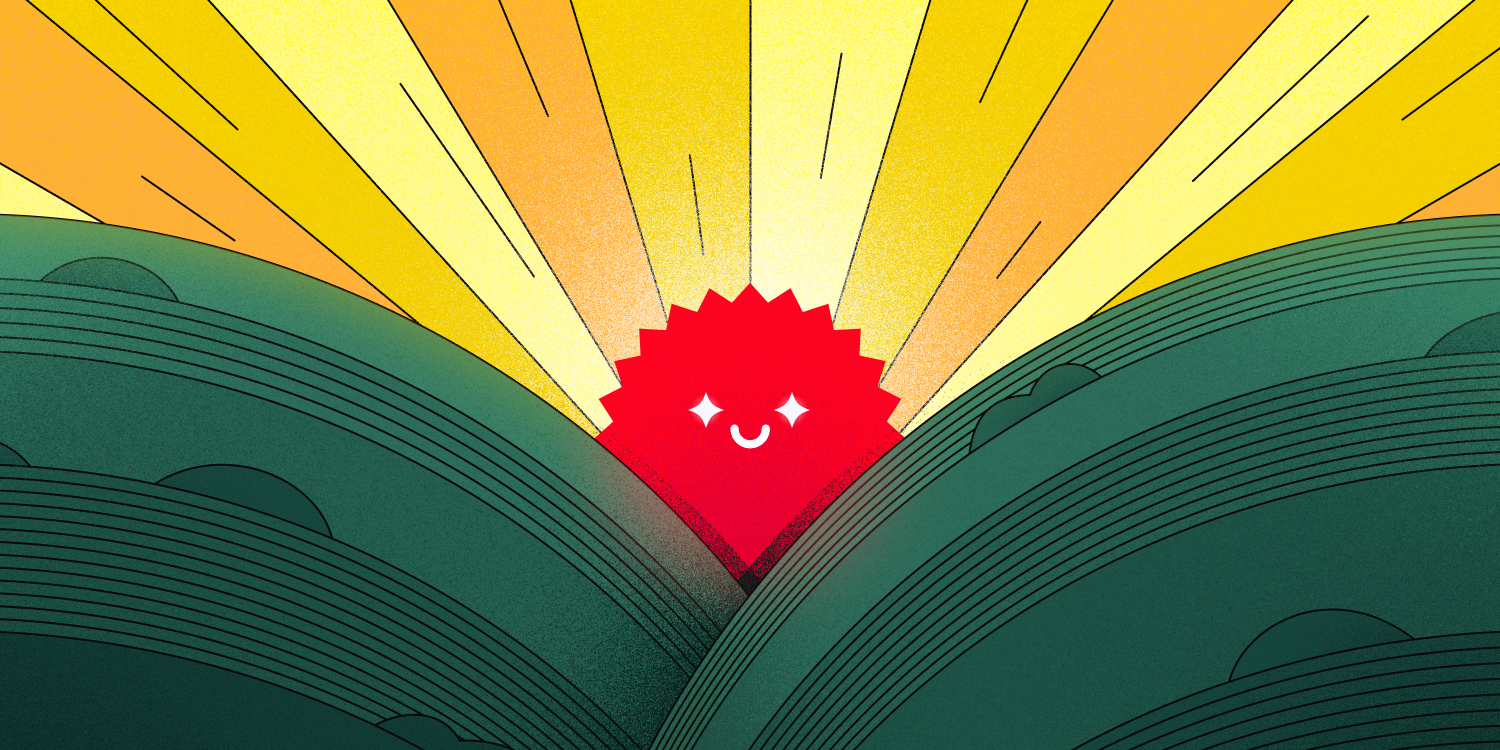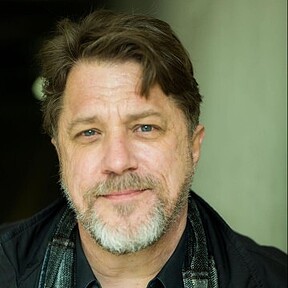
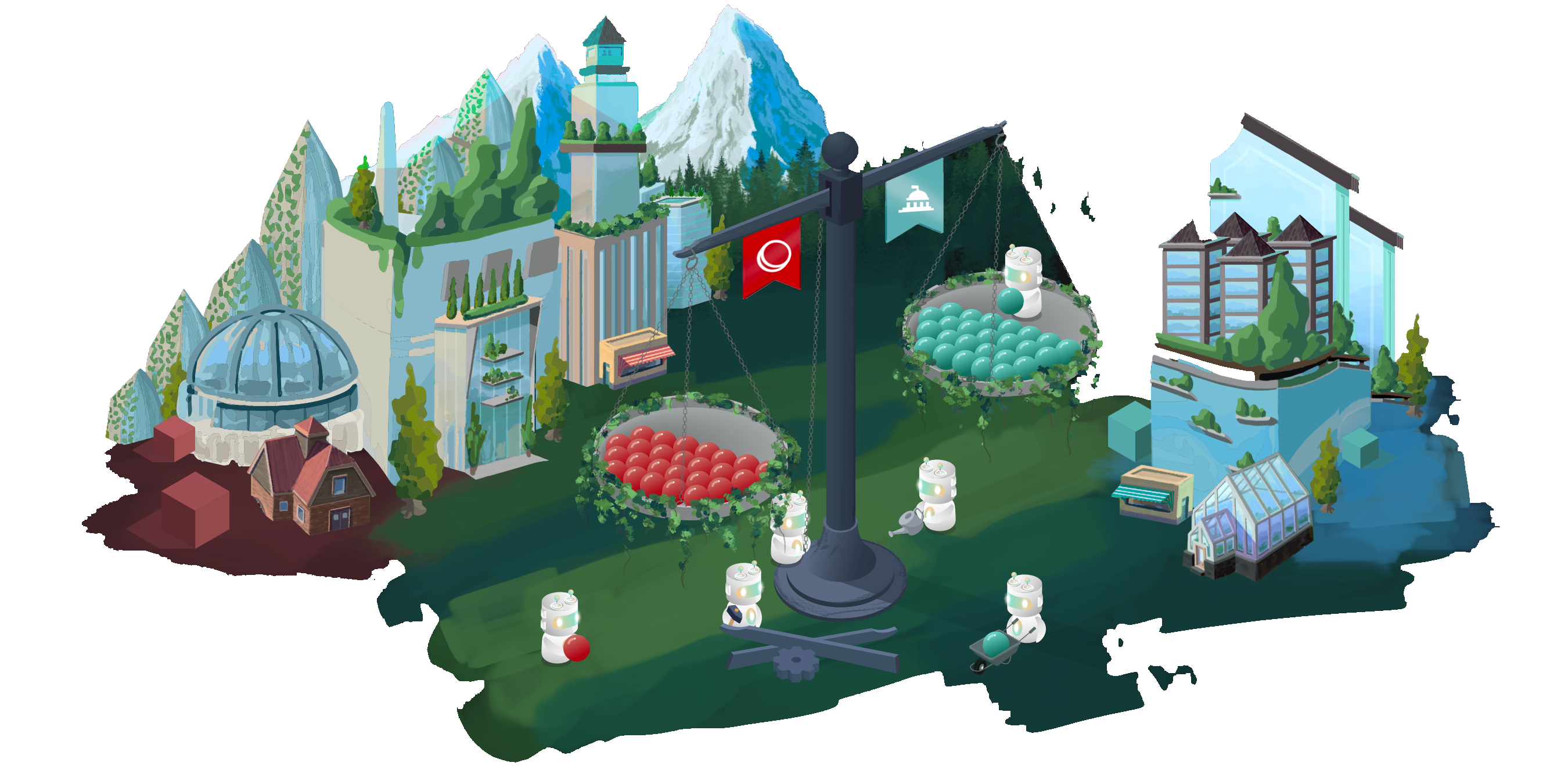
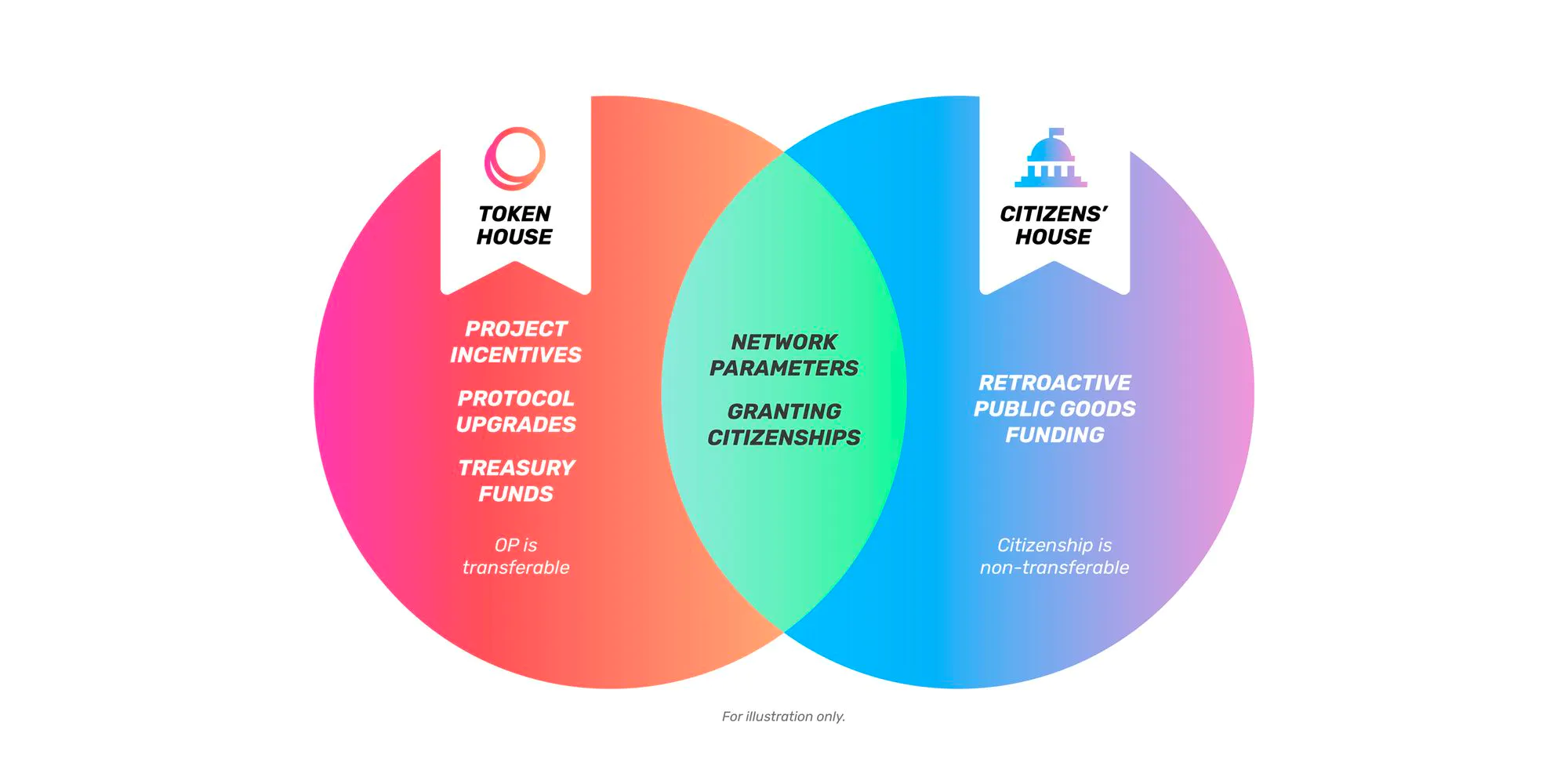
- Badgeholder Selection
Badgeholders have the power to distribute OP tokens to projects. They’re instrumental in running an effective RetroPGF round. For RetroPGF Round 2, badgeholders were selected across four different criteria.
- Nominations
Anyone could nominate a project on the forum by providing a name, impact description and link to Github/Twitter.
- Project Profile Creation
Projects had to create a profile where they were asked for general information, as well as a description of their project and its impact. Information provided by Projects can be viewed on the archive page.
- Voting
Badgeholders were provided with a badgeholder manual and asked to evaluate and vote on nominated projects via a voting form
- Payout / Funding Distribution
Projects received rewards based on their received OP allocation votes from each badgeholders which can be viewed here.
- Infrastructure & Dependencies
Software used to build or deploy the OP Stack / contributions to protocols or standards upon which the OP Stack runs / experiments that support future development of the core OP Stack protocol.
- Tooling & Utilities
Work that helps builders create applications on Optimism mainnet, build on the OP Stack, interact with governance of the Collective, or use applications built on Optimism.
- Education
Work to spread awareness and knowledge of how Optimism works, whether technically or socially.

- Provide Impact Details
Describe how the project has made a positive impact within the scope of this round
- Choose the Right Category
Ensure that you nominate projects in the relevant category.
- Avoid Duplicates
Check if the project has already been nominated to prevent duplication.
- Read the Project Manual
Familiarize yourself with the Project Manual, which provides an overview of the process and answers frequently asked questions.
- Opt-In and Create a Project Profile
To be eligible, opt into the round and complete your project profile in the RetroPGF application manager by Feb 21. This profile should include additional information about your project and verification of your GitHub or Twitter account.
- Stay Updated
Keep an eye out for the RetroPGF application manager, set to launch by the end of January. More details will follow soon!
This is a nomination to recognize and celebrate the outstanding contributions of a project within the OP Stack ecosystem. If you know of a project that has significantly supported the development and usage of the OP Stack, we encourage you to nominate it for recognition.
- The projects name
- A description of how the project has supported development and usage of the OP Stack
- A link to the project’s GitHub or Twitter
- (Optional) Contact info for the project or project lead
The Foundation may also nominate collections for funding. A collection is different from a project in that a collection may not have a single entity that can be verified via GitHub or Twitter. Optimism’s Support NERDs or the set of code contributors to the Optimism monorepo are both examples of potential collections.
To nominate a collection, the Foundation must comment on a forum thread with the collection’s name, the list of addresses in the collection, the breakdown of how funding would be distributed across those addresses, and a description of how they’ve provided public good to the Collective.
Because of the high risk for fraud, collections will only be nominated by the Foundation in this round of RetroPGF (Round 2).
- Round 1 Alumni
We welcomed back 14 badgeholders who had previously participated in Round 1 of RetroPGF. Their experience and insights from the first round make them valuable assets for Round 2.
- Optimism Foundation's Picks
The Optimism Foundation had a say in selecting 21 badgeholders, each bringing a unique perspective to the table. Their diverse backgrounds and expertise contribute to a well-rounded group.
- Optimism's Token House Elections
10 badgeholders were elected by Optimism's Token House , adding a democratic element to the selection process. One voting badge will be given to 10 Token House delegates
- Badgeholders Nominates
To ensure community representation, we opened up nominations for badgeholders from the three categories mentioned above. This approach allows us to include fresh voices and new perspectives in our badgeholder team. Each of badgeholders will be able to distribute a voting badge to one community member of their choosing.
- Passion for Public Goods
We love advocates who believe in the value of public goods, not just in crypto but in the broader world. If you're passionate about the greater good, you're our kind of advocate!
- Innovative Thinkers
Are you someone who can help us improve and refine retroPGF as a funding mechanism? We're looking for creative minds who can advance the process and structure to make it even better.
- Domain Expertise
If you're an expert in any of the categories up for funding in RetroPGF 2, we want to hear from you. Your expertise can be a game-changer!
- Alignment with Our Mission
We're on a mission to support the long-term growth of the Optimism ecosystem and the Collective's mission. If you share our vision and goals, you're a great fit for our team.
- Holding a voting badge for one round does not guarantee voting rights in subsequent rounds; Citizenship criteria may change in the future.
- Voting badges in RetroPGF 2 are recorded as a simple attestation in the AttestationStation, not as a soulbound token, allowing for flexibility in future iterations.
- Badgeholders are expected to adhere to the Optimism Delegate Code of Conduct.
- Accepting a voting badge is optional; if an eligible person declines, the badge won't be distributed to someone else.
- Badgeholders with any participation or ownership stake in a project up for vote in RetroPGF 2 are expected not to vote in favor of that project. Detailed conflict of interest rules will be provided in a forthcoming Badgeholder Manual.
- Getting a badge for RetroPGF 2 doesn't mean you're guaranteed permanent participation in the Citizens' House or future RetroPGF iterations. Our citizenship criteria may evolve over time. The responsibility for citizenship distribution ultimately lies with Optimism's two-house governance system.
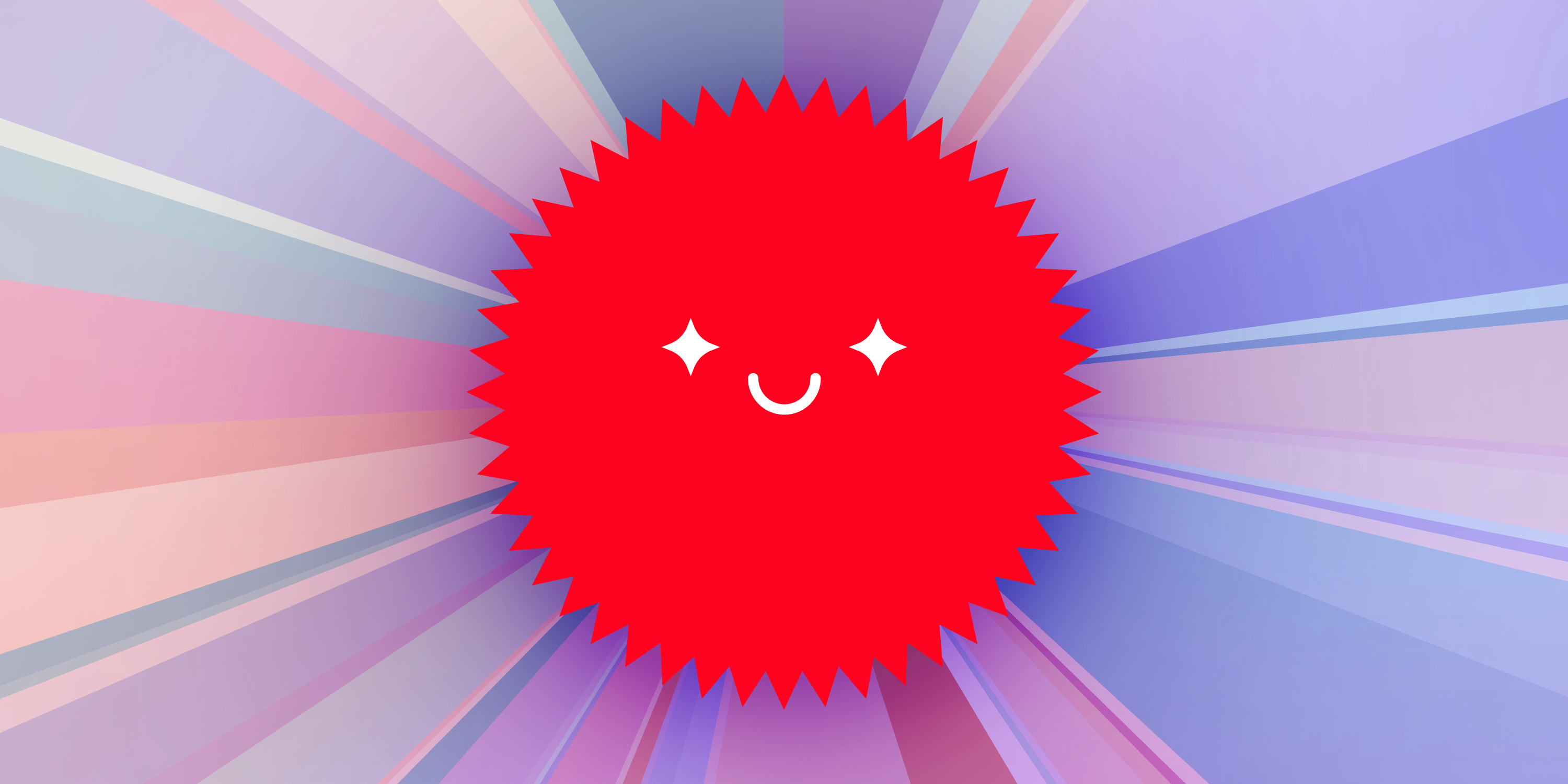
- Identify project that I won’t be voting for due to already existing funding through VCs or token raises. Allocate 0% to those projects.
- Identify the 10-20 projects that either have great future potention and growing impact or past impact and a really good idea. Allocation about 50% of my vote to those project split up in a way that makes sense.
- Use the remaining 50% of my vote to vote evenly across the remaining projects in the belief that even 1% of my vote (or whatever it works out to) is a significant amount of money, and especially for small projects, any amount of money keeps them going and is a huge encouragement.

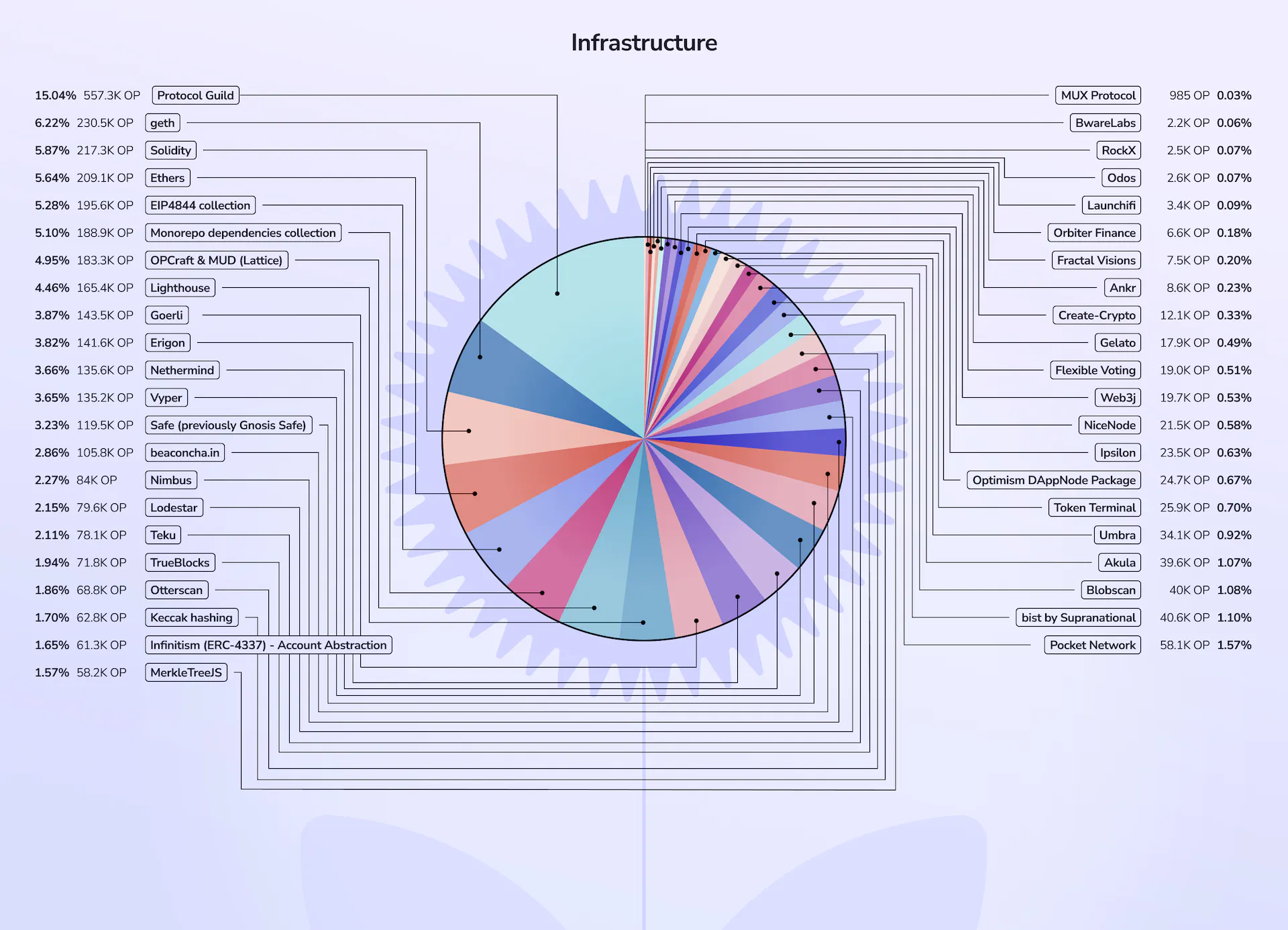
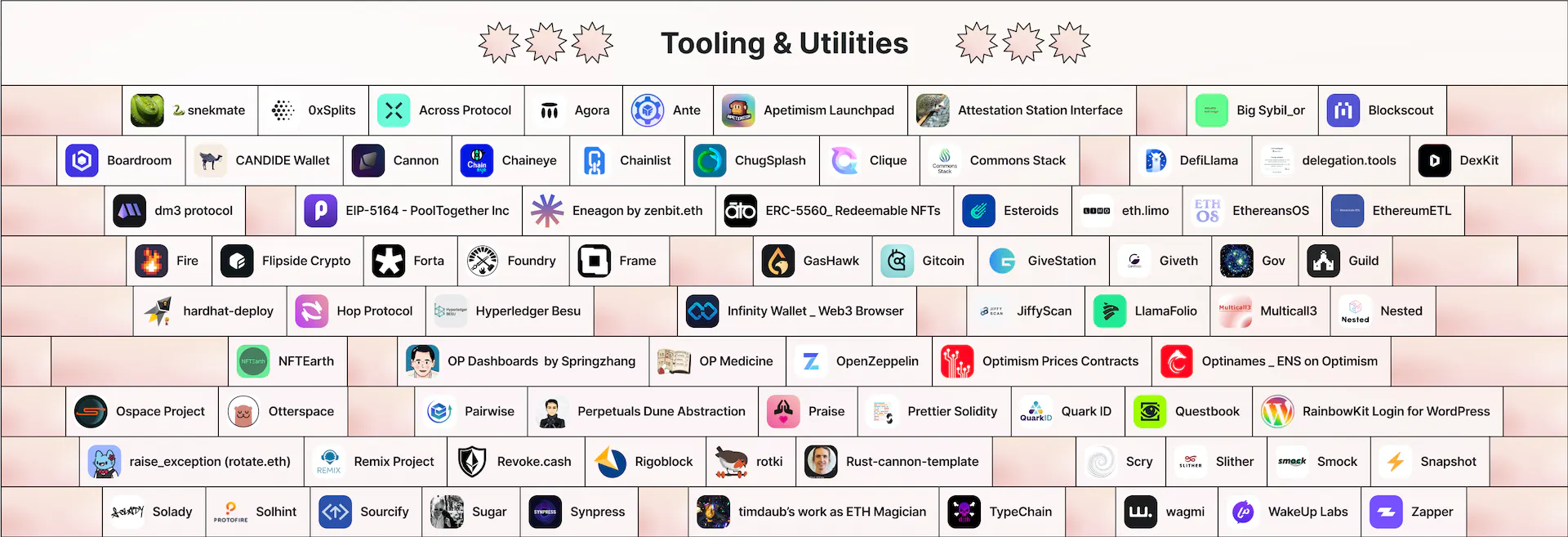
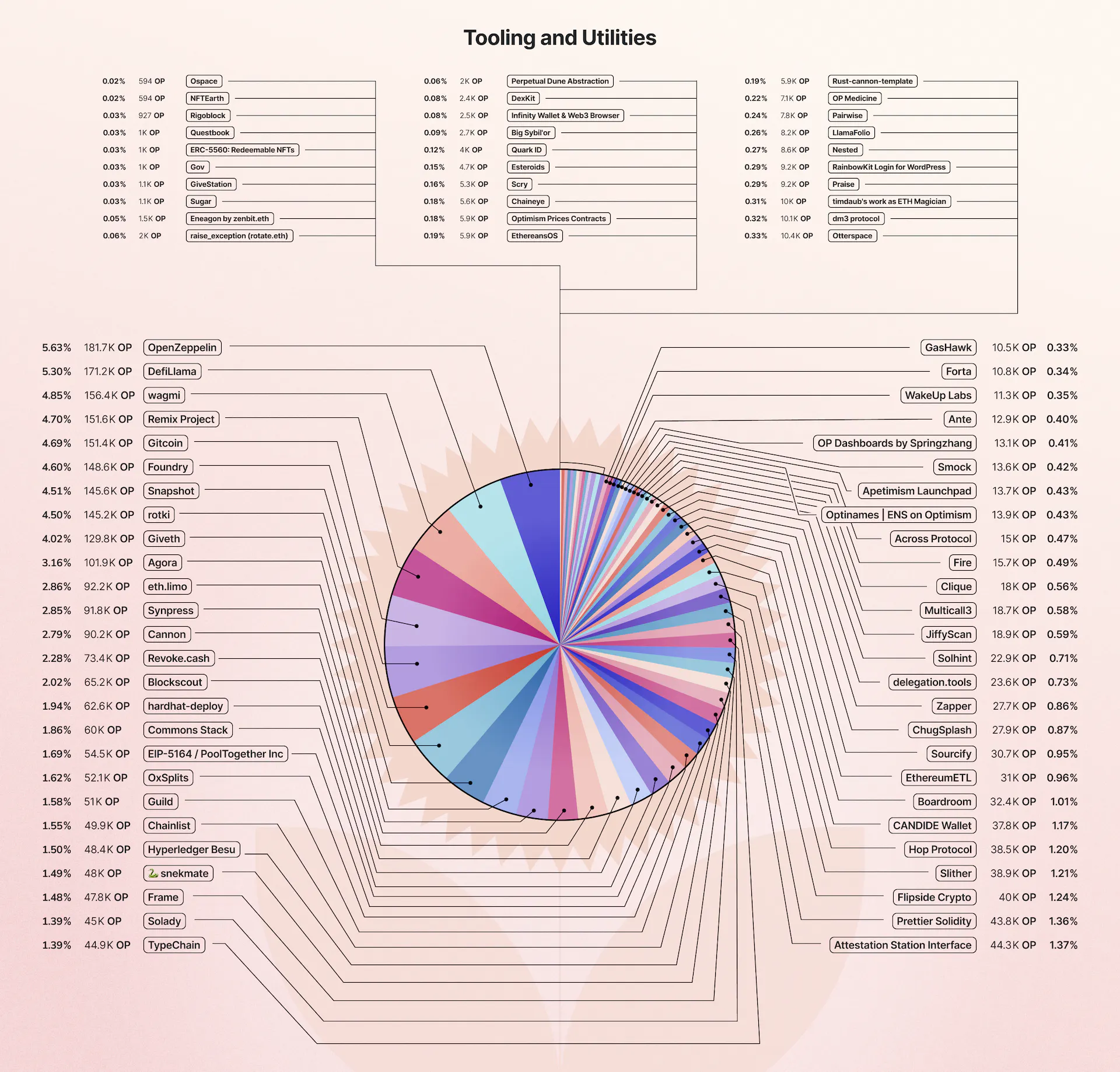
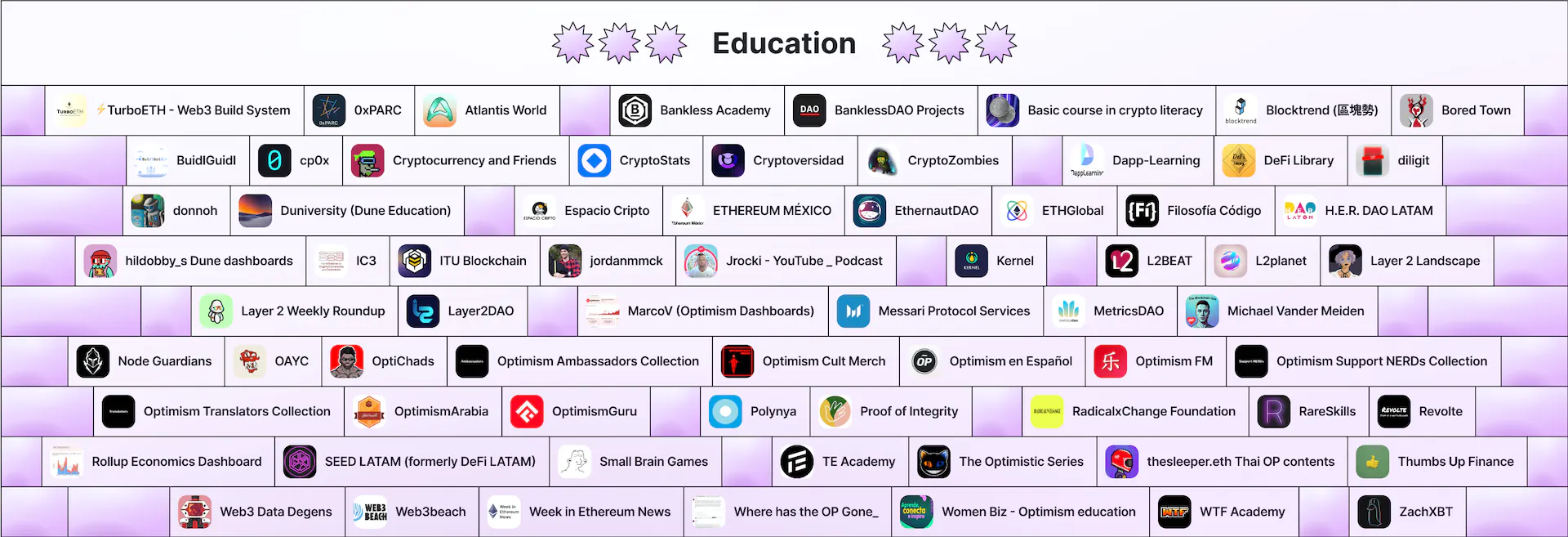
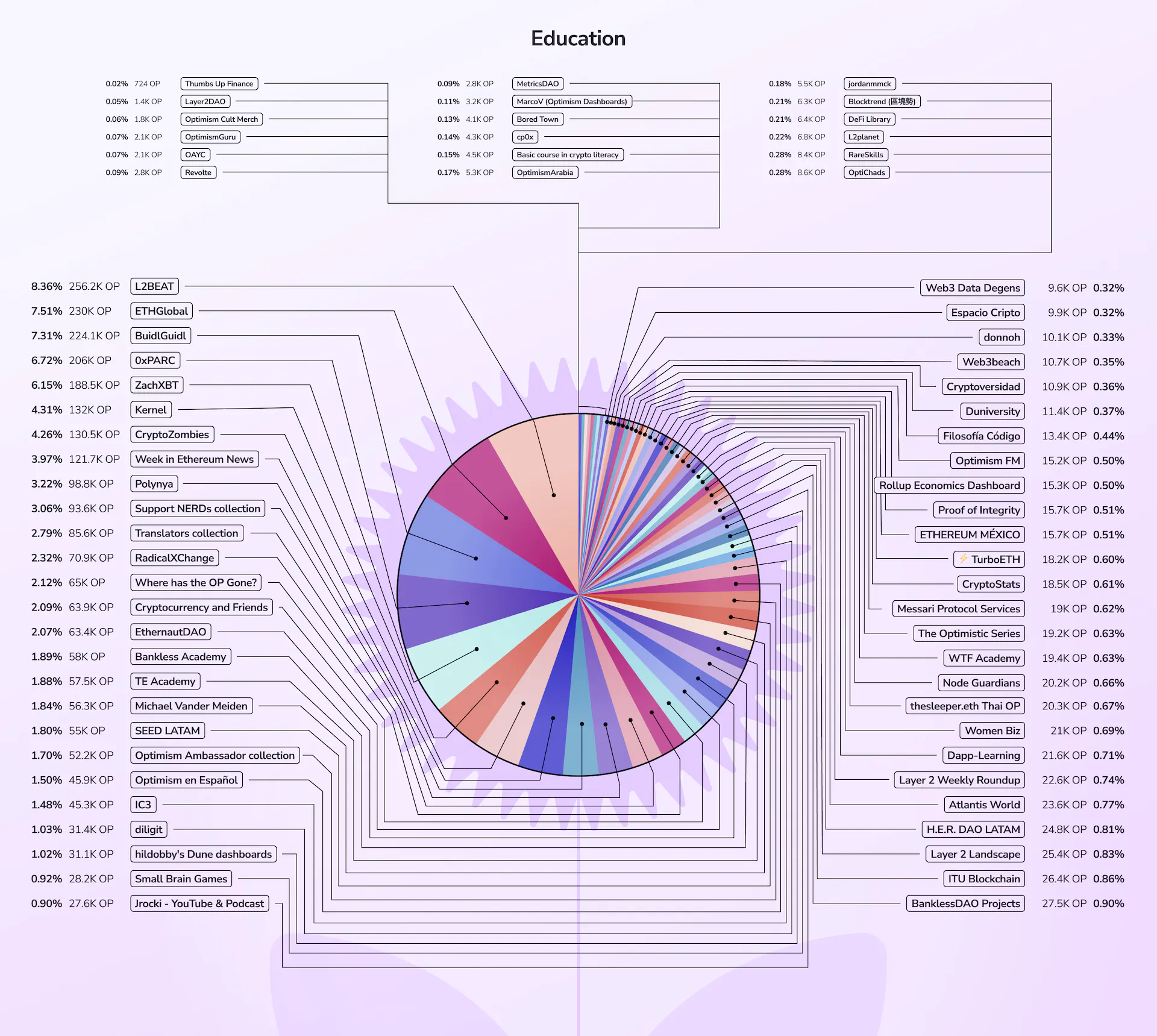
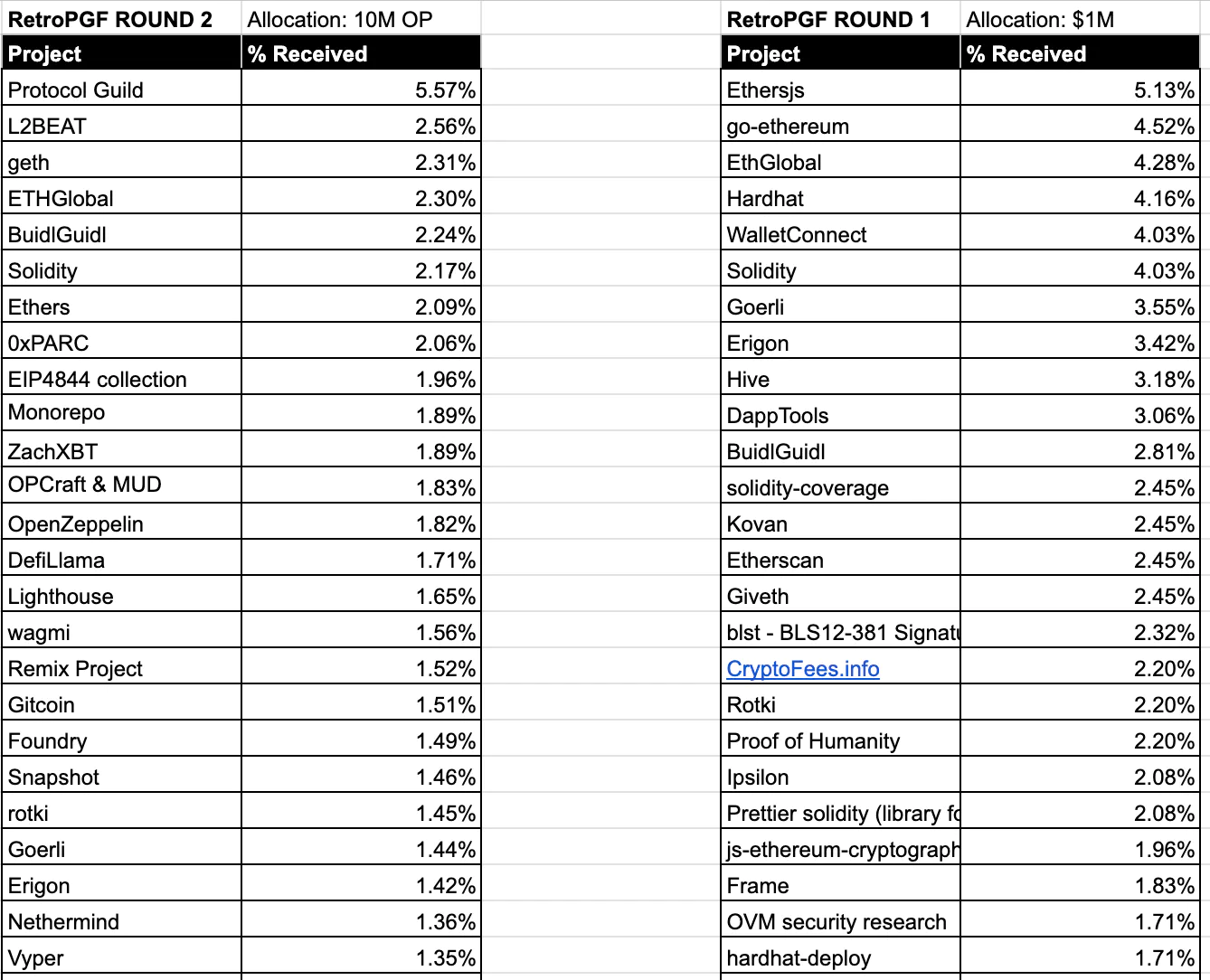
- Project EligibilityTo be considered for RetroPGF, projects had to go through a two-step process: nomination in the forum and subsequent sign-up via the Project intake form. This process aimed to filter out qualifying projects and gather valuable information for badgeholders to assess impact.
- Project NominationsThe community was encouraged to signal which projects had generated impact for the Optimism Collective. However, the nominations process resembled a mini-dilemma of the commons, with few participants feeling responsible or incentivized to nominate relevant projects. Surprisingly, even some top recipients had to self-nominate. However, being nominated was a positive signal, as all nominated projects received some funding.
- Project Intake Form:This form aimed to collect information that would help badgeholders evaluate projects' impact and potential sources of external funding. Questions included:Almost all of projects, information provided by projects was often too vague, making it challenging for badgeholders to assess impact accurately. This was due to the lack of guidance."How do you support the development and usage of the OP Stack? What public good do you provide to the Collective?""How do you sustain yourself? Please list sources of funding and revenue."
- Unclear Information & StatesThe community expressed the need for a more aligned and structured process"Many projects did not provide enough information on the elements they were evaluated on: what is their impact to optimism, and what is their funding situation like,” - Anonymous.“The application form for next season should be more aligned with the review assessment process,” - Krzysztof Urbanski.“…ask projects to more clearly submit information that will be relevant to the evaluation criteria (impact and access to funding being the main one),” - Cassidy.
- Project ProfilesProject descriptions and impact narratives were often narrative-driven, while funding sources lacked specific numbers. This resulted from a minimal prompt and limited examples for projects to follow. Projects tended to focus on future aspirations rather than describing their past impact.
- Quantity OverloadBadgeholders consistently expressed concerns about the sheer number of projects to review. Feedback included:"Smooth experience, but way too many projects.""...this is really about it being unmanageable for badgeholders."In this round, a staggering 195 projects were eligible for voting, compared to 76 in Round 1. Most badgeholders distributed their votes across 20-40 projects, with the median badgeholder evaluating 30 projects.
- Introducing "Collections"To address the issue of evaluating individual contributions at scale, the Optimism Foundation introduced the concept of "Collections." Each collection was a list of contributors with assigned weights for funding distribution. Five collections were nominated, including Monorepo Dependencies, EIP-4844 Contributors, and Optimism Support NERDS, Ambassadors, and Translators.The experiment aimed to simplify the allocation of funding to broader groups of contributors, which might have been more complex if individual contributors were considered.
- Mixed Feedback on CollectionsWhile some collections were uncontroversial, the EIP-4844 collection faced pushback from Ethereum contributors. Concerns included:Incentive Distortion: Critics argued that collections created strong incentives for work that could be retroactively funded, potentially altering teams' priorities.Challenges in Assessment: Assessing individual contributions to determine collection weights raised concerns about biases towards visible work.
- High-Leverage Voting Through CategoriesLooking ahead, categories may offer a solution through high-leverage voting. Badgeholders without expertise in a particular area could allocate funding to an entire category, which would then be distributed proportionally to other badgeholders' votes.
- Guidance with FlexibilityThe provided guidelines were comprehensive yet flexible, offering frameworks for evaluation rather than rigid rules. This approach encouraged badgeholders to apply their own judgment in translating philosophical concepts into real-world assessments.
- Emphasis on CollaborationCollaboration among badgeholders was strongly encouraged, fostering a high-context environment through asynchronous communication on platforms like Discord and Telegram. Additionally, collaborative calls hosted by Other Internet played a pivotal role.
- The Impact of Collaborative CallsCo-Working and Collective Intelligence, The first call aimed to provide co-working time, allowing attendees to delve into projects with their breakout groups. It provided an opportunity to discuss questions and insights about decision-making processes. This collaborative approach leveraged the collective intelligence of badgeholders.“It was really helpful to have sessions like this one with fellow badgeholders to talk about the process, different methods people were using, and the different ways others were approaching voting.”The second call focused on feedback, reflection, and the accumulation of ideas for future rounds. Badgeholders found these sessions immensely valuable, and they should continue to be an integral part of RetroPGF.“I appreciate the diversity of badgeholders and the work done by badgeholders to collaborate.”
- The Challenge of InterpretationEvaluating the types of public goods deserving funding is one of the most intricate aspects of Retroactive Public Goods Funding (RetroPGF). Badgeholders widely expressed the need for greater clarity in impact evaluation and philosophical alignment on the types of projects RetroPGF should support."Are we taking impact vs. profit literally?”“On the philosophy of impact = profit, we wish there was a clearer definition of what impact looks like.”
- Seeking Clarity in Evaluation“Introduce better categories and stronger evaluation heuristics for each category.”“More discussion and structure of what the assessment criteria are - what are the goals and criteria that everyone can agree on.”“Different people were assessing different ways and had their own criteria for assessing. People were not in sync on the criteria, and how we each determined that based on the applications was unclear.”
- Custom Evaluation FrameworksIn response to the ambiguity, some badgeholders developed their own evaluation frameworks. These often included categorizations and combinations of criteria to simplify impact assessment. Examples ranged from binary criteria like"Is the Project Optimism specific [Y/N]""to simplified impact sizing like "Contribution Type [Large, Medium, Small]."
- The Dilemma of Future ImpactWith the rise of proactive grant models, considering future impact during evaluation became a topic of debate. Badgeholders engaged in discussions about whether to factor in expected future impact. A Twitter poll by Tim Beiko on Revealed mixed opinions. It highlighted the complexity of making the concept of retroactive funding well-understood.
- Addressing the ChallengesHow can we provide better mental models and definitions for impact evaluation?How can we support badgeholders in more effectively collaborating on impact assessment?How do we communicate the core mechanics of retro funding in a way that preserves badgeholder agency?The path to aligning "impact" and "profit" in RetroPGF is laden with complexity and calls for continued dialogue, exploration, and refinement. The collective pursuit of a shared understanding and effective evaluation methods will be instrumental in realizing the vision of retroactive public goods funding.
- MVP Voting SolutionOptimism Foundation opted for a Minimum Viable Product (MVP) voting solution instead of a fully integrated voting interface. Badgeholders submitted their votes using a DeForm form with wallet verification. To facilitate the vote allocation process, badgeholders were provided with a voting scratchpad, allowing them to allocate their votes, ensuring they added up to 100%, before copying them into the form. The scratchpad also served as a means for badgeholders to share their vote allocations with the community.
- Resourcefulness Amidst ChallengesWhile the voting user experience was not ideal, badgeholders showcased their ingenuity in addressing the issues. For instance, Ludens from Lattice developed a script that could export votes from the voting scratchpad and import them into the form. Additionally, in the final days of voting, Vitalik provided a script that allowed for the quick tallying of votes across the ballot using the browser console.
- A Call for Better Voting ToolingFuture rounds of RetroPGF must aim for a smoother and more user-friendly voting experience, eliminating operational issues for badgeholders. However, beyond addressing friction, the emergent behavior observed in Round 2 highlights a significant design hypothesis: RetroPGF should evolve into a permissionless protocol that empowers community members to build voting, evaluation, and aggregation experiences on top of it. This direction deserves exploration in future rounds.
- Questions for ImprovementHow can the Optimism Collective provide a more seamless voting experience to badgeholders?How can the Optimism community collaborate to develop tooling that enhances the RetroPGF system for all participants?The RetroPGF journey is one of continuous learning and adaptation, with the aim of creating a more inclusive, efficient, and community-driven platform for rewarding past contributions.
